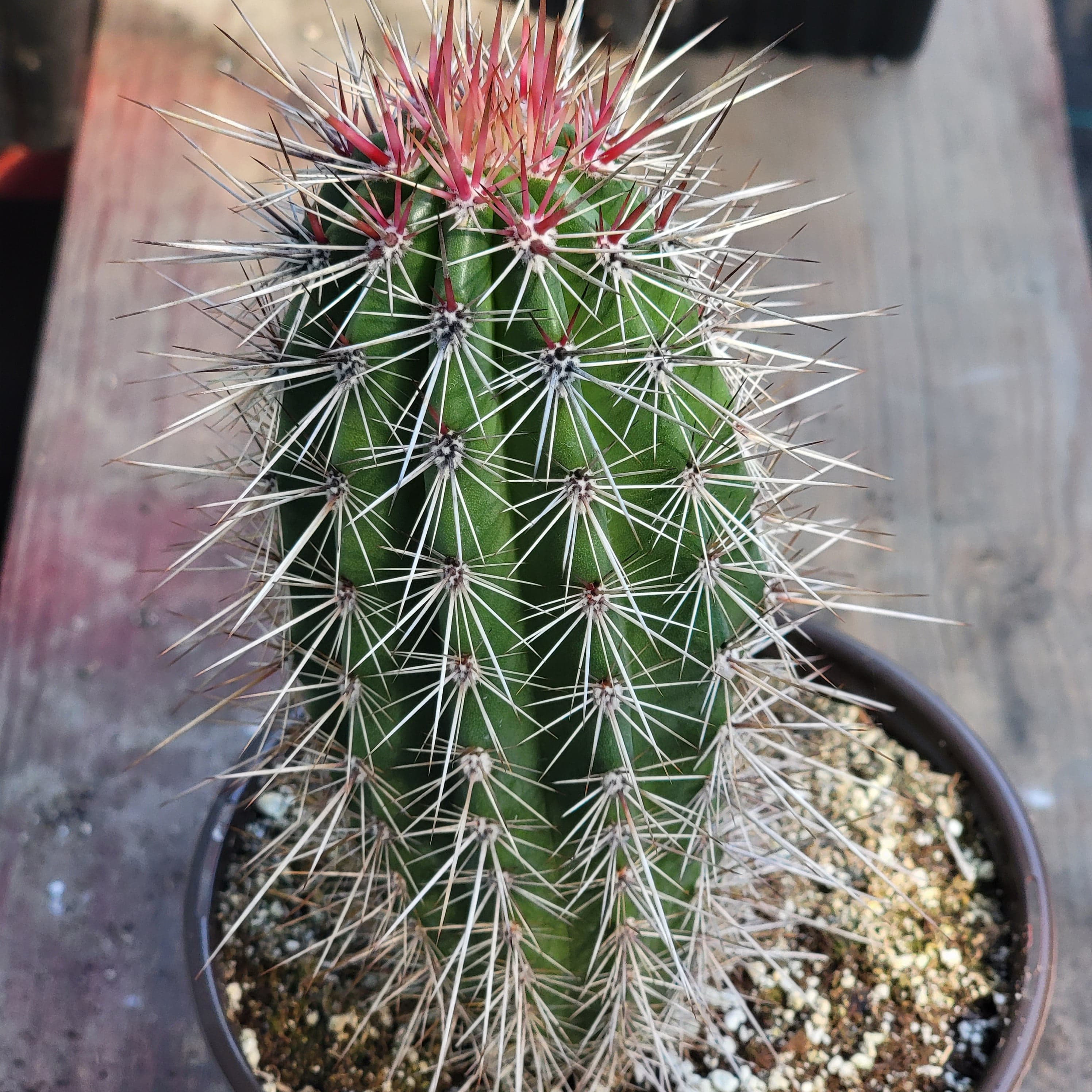
Pachycereus Pringlei ( Cardon) Pink
Pachycereus pringlei, commonly known as Cardon, is a towering cactus species native to the Sonoran Desert and Baja California, Mexico. It can reach up to 60 feet (18 meters) in height, making it the largest cactus species in the world. This giant thrives in hot, arid environments, with an optimal temperature range of 68°F to 100°F (20°C to 38°C), and can withstand desert heat up to 113°F (45°C). However, it is sensitive to frost and cannot survive temperatures below 32°F (0°C). The cactus can be propagated by seeds or cuttings, and it requires well-drained, sandy, or rocky soil. Watering should be minimal, allowing the soil to dry completely between waterings, with little to no watering in winter. Fruiting occurs after 10-30 years, producing edible pinkish-red fruits following the bloom of large, white, nocturnal flowers, typically in late spring to early summer. Genetically, Pachycereus pringlei is part of the Cactaceae family and shares adaptive traits like water storage and a ribbed structure, helping it survive droughts and extreme desert conditions.